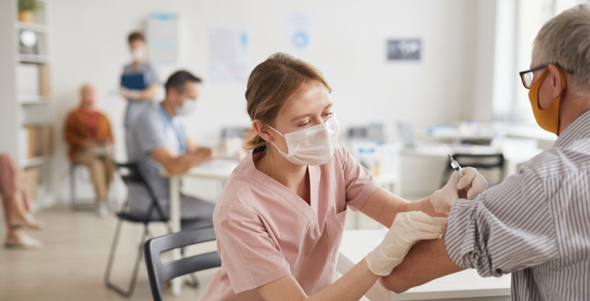By the bioMérieux Connection Editors
In the U.S., we’ve cleared an important milestone in vaccine distribution. As of April 19, all people 16 and older are now eligible to receive the COVID-19 vaccine in every state. Complicated, phase-based plans are ways of the past.
Earlier this month, Pfizer-BioNTech requested that the Food and Drug Administration (FDA) expand the emergency use authorization for its vaccine to permit use in children 12 and older. “If that happens, young adolescents could potentially start getting vaccinated before school starts in the fall of 2021,” states an April New York Times article.
What You Should Know About the COVID-19 Vaccine
All COVID-19 vaccines currently available in the U.S. have been shown to be safe and effective at preventing COVID-19. Based on data about vaccines for other diseases and early data from clinical trials, experts also believe that getting a COVID-19 vaccine helps keep you from getting seriously ill even if you do get COVID-19.
The average efficacy rate for both approved mRNA vaccines (Pfizer-BioNTech & Moderna) is about 90%. Pfizer-BioNTech’s vaccine has shown a 95% efficacy in preventing COVID-19 in those without prior infection. It has also been found to protect against the B.1.1.7 variant but it may be less effective against the variant first detected in South Africa (B.1.351). Moderna’s vaccine has shown 86% efficacy in clinical trials but may be better at protecting against the B.1.351 variant than Pfizer’s vaccine.
What to Expect When You Get Vaccinated
Shortly after you are vaccinated you may experience some side effects, which are normal signs that your body is building immunity. These side effects may impact your ability to do daily activities, but they should go away in a couple days. Side effects after your second shot may be more intense than the ones you experienced after your first shot. Some people have no side effects at all.
Side effects on the arm where you got the shot:
- Pain
- Redness
- Swelling
Side effects throughout the rest of your body:
- Tiredness
- Headache
- Muscle pain
- Chills
- Fever
- Nausea
In most cases, discomfort from pain or fever is a normal sign that your body is building protection. Contact your doctor or healthcare provider if:
- The redness or tenderness where you got the shot gets worse after 24 hours
- Your side effects are worrying you or do not seem to be going away after a few days
What’s Possible Once You’re Fully Vaccinated
Don’t forget that people are not considered fully vaccinated until two weeks after their second dose of the Pfizer-BioNTech or Moderna COVID-19 vaccine, or two weeks after a single-dose Johnson & Johnson’s Janssen COVID-19 vaccine. The CDC recommends that you should keep using all the tools available to protect yourself and others until you are fully vaccinated.
After you are fully vaccinated for COVID-19, you may be able to start doing some things that you stopped doing because of the pandemic. For example, the CDC states that you can gather indoors without masks with other people who are also fully vaccinated. Americans who are vaccinated also no longer need to wear a mask outdoors while walking, running, hiking, or biking alone, or when in small gatherings.
Overall, we are still learning how vaccines affect the spread of COVID-19. Even if you are fully vaccinated against COVID-19, it is important to keep taking precautions in public places like wearing a mask when necessary, staying 6 feet away from others and washing your hands often.
Locate a Vaccination Site in Your Area
Learn how to get vaccinated in your area by using the CDC’s vaccine finder tool. Most places require appointments; however, everyone age 16 and up are currently eligible to receive a vaccine.
Opinions expressed in this article are not necessarily those of bioMérieux, Inc.



